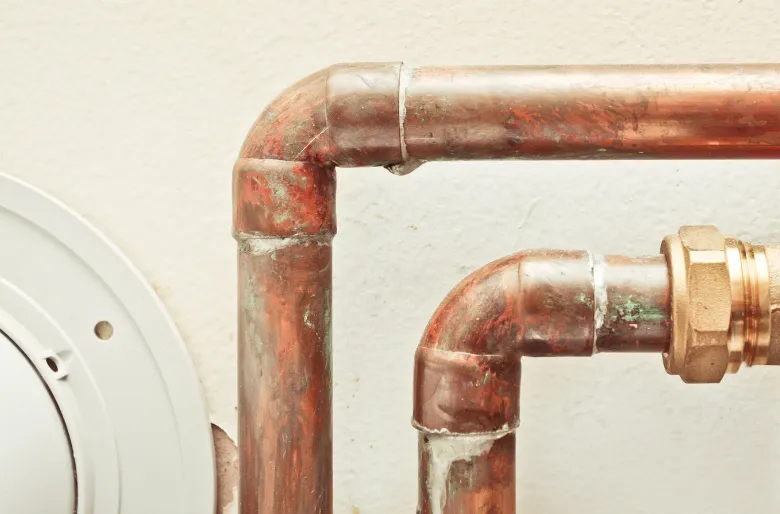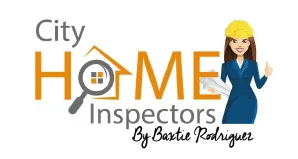
Frozen Pipes Ahead? What Chicago Homeowners Can Do Now
🥶 Frozen Pipes Ahead? What Chicago Homeowners Can Do Now
Focus: pipe insulation, exterior hose bibs, and attic plumbing in older two-flats & bungalows
When temps dip in November, Chicago’s older homes—especially classic two-flats and brick bungalows—are vulnerable to frozen pipes. Lines in unheated spaces (attics, porches, exterior walls, and crawl areas) are the first to freeze, crack, and leak. Here’s how to prevent headaches before the deep freeze hits.
🔎 What Inspectors Flag Most Often
1) Uninsulated Supply Lines
Exposed copper or PEX in attics, unheated stair enclosures, porch ceilings, and perimeter basements.
Long runs against foundation walls with cold air infiltration.
2) Exterior Hose Bibs (Spigots)
Standard (non–frost-free) bibs left connected to hoses.
Missing or inoperable interior shut-off valves for winterization.
3) Attic & Knee-Wall Plumbing
Bath supply lines routed through unconditioned attic bays.
Gaps in air sealing that let frigid air reach pipes even if the home is otherwise warm.
4) Legacy Conditions in Older Stock
Galvanized steel with reduced internal diameter (more prone to blockage and bursts).
Patchwork insulations, open joist bays, and unsealed penetrations that channel cold air to pipes.
✅ What You Can Do This Month (Before the First Hard Freeze)
A. Insulate & Air-Seal
Wrap exposed hot and cold lines with closed-cell foam pipe insulation (R-value matters).
Add pipe sleeves where lines cross rim joists and exterior walls; seal gaps with foam/caulk.
In attics, bury lines inside the thermal envelope (below insulation) or reroute if feasible.
B. Winterize Hose Bibs
Disconnect hoses and Y-splitters (critical!).
Close the interior shut-off valve, then open the exterior spigot to drain.
If you have frost-free sillcocks, still disconnect hoses so they can drain correctly.
C. Protect Attic & Porch Runs
Install heat cable/heat tape on at-risk sections per manufacturer instructions and with a GFCI outlet.
Box-in and insulate runs under enclosed porches or sunrooms that sit over open air.
D. Stabilize Indoor Temps
Keep the home at ≥ 55°F when away.
On sub-zero nights, let faucets on exterior-wall runs drip slowly and open vanity/cabinet doors to allow warm air around pipes.
E. Add Smart Safeguards
Place leak sensors near water heaters, under kitchen/bath sinks on exterior walls, and along basement perimeter lines.
Consider a smart main-shutoff valve for automatic protection when a leak is detected.
🧰 Quick Fixes vs. Pro Solutions
DIY this week
Insulate 6–12 feet of exposed pipe near cold areas.
Install foam gaskets behind exterior-wall outlet/switch plates to cut drafts.
Weather-strip basement hatch/side doors that leak cold air.
Plan with a pro
Convert old hose bibs to frost-free with proper pitch.
Reroute attic/knee-wall plumbing into conditioned space.
Address foundation air leaks and add targeted basement/attic insulation.
🚨 If a Pipe Freezes (or You Suspect One)
Shut off the affected fixture line or the main water if you can’t isolate it.
Open faucets to relieve pressure.
Warm the pipe slowly with a hair dryer or space heater (no open flames).
If you see leaks or bulging pipe, call a licensed plumber and leave water off until repaired.
📋 November Checklist (Chicago Edition)
☐ Disconnect all hoses and drain hose bibs
☐ Insulate visible basement, garage, and porch lines
☐ Seal rim-joist gaps and pipe penetrations to the exterior
☐ Add heat cable to attic/knee-wall runs as needed
☐ Place leak sensors at high-risk spots
☐ Verify you can locate and operate the main shut-off valve
✅ The Bottom Line
Frozen pipes are preventable—especially in Chicago’s older two-flats and bungalows—if you insulate, air-seal, and winterize in November. An inspector can pinpoint hidden risks (attic runs, exterior-wall lines, problem hose bibs) so you can fix them before the first arctic blast.
👉 Get winter-ready. Book your November safety inspection with City Home Inspectors: www.cityhomeinspectors.com
OFFICE ADDRESS
Illinois
City Home Inspectors, LLC
1010 Lake St. #200
Oak Park, IL 60301
Florida
1010 Lake St. #200
Sarasota, Fl 34236
